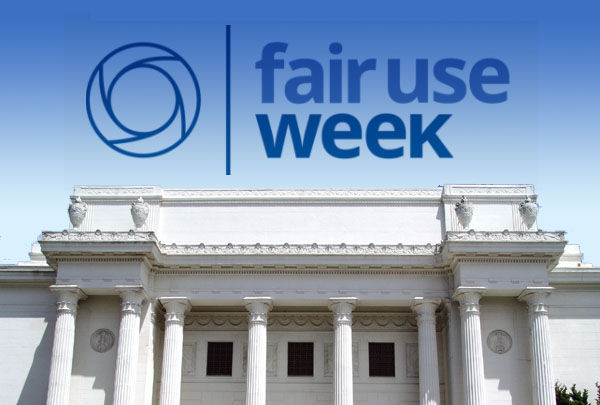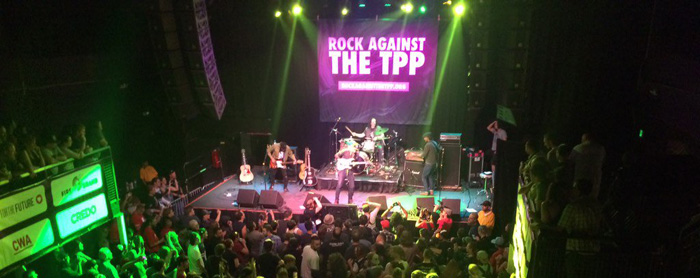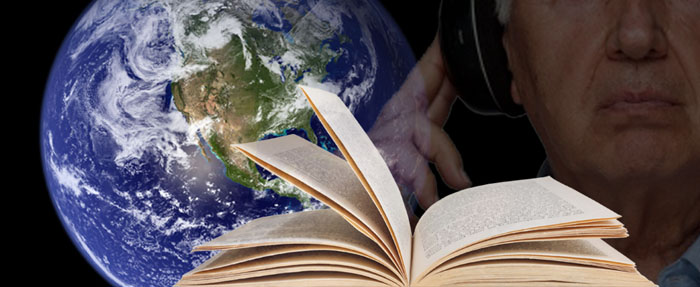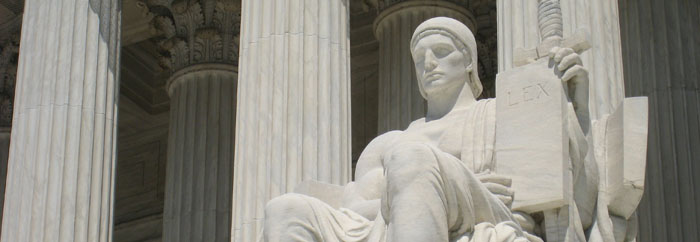The Internet Archive Canada asked Lila Bailey to report on the policy landscape for digital libraries in Canada. This is a summary of her report: Looking good.
On September 30th, the Canadian National Institute for the Blind transferred accessible books in audio format to Australia through the book service of the Accessible Books Consortium (ABC). This transfer occurred without the legal obligation to request permission from the copyright owners. This effort was made possible by the Marrakesh Treaty, which creates exceptions in copyright law for the print-disabled. As we previously noted, Canada was the 20th signatory to the treaty, triggering it to enter into force.
Canada has made great strides towards increasing access to human knowledge in recent years. Judicial and legislative developments have brought balance into the law, ushering in more opportunities for public access and use of copyright protected works. And now, with the Marrakesh Treaty entering into effect, it seems a good a time to highlight Canada’s contributions to the world’s accessible digital heritage.
Our sister organization, Internet Archive Canada, has digitized more than 530,000 books, microreproductions, archival fonds, and maps. Libraries and institutions that have collaborated with, financially supported, and contributed material to IAC stretch across the entire country, from Memorial University in Newfoundland to University of Victoria in British Columbia. Internet Archive Canada has been working on accessibility projects, and has digitized more than 10,000 texts in partnership with the Accessible Content E-Portal. To date, this material has only been available to students and scholars within Ontario’s university system. Joining the Marrakesh Treaty now makes it possible for accessible versions of works to be shared more broadly within Canada, and with the other countries that have ratified the treaty.
Canadiana is another group that has helped to advance access to knowledge in Canada. Initially created by Canadian Universities in 1978 to microform National Library collections, Canadiana has more recently worked to digitize Canadian heritage with a focus mainly on public domain printed materials. The University of Toronto Library has also developed full-text digital collections, primarily consisting of public domain materials. These special collections contain a wide variety of items, including over 200,000 books, over 600 archived versions of local government websites, Canadian pamphlets and broadsides, and a fine art repository among many other materials. Similarly, the University of Alberta has developed an open access digital portal called Peel’s Prairie Provinces – a collection containing both an online bibliography of books, pamphlets and other materials related to the settlement and development of the Canadian West, as well as a searchable full-text collection of digital version of many of these materials. The portal allows access to a diverse collection that includes approximately 7,500 digitized books, over 66,000 newspaper issues, 16,000 postcards and 1,000 maps.
The above are just a few examples of Canadian efforts to bring analog materials into digital form to allow increased access to knowledge. Many more such projects can be found via the Canadian National Digital Heritage Index (CNDHI). Supported by funding from Library and Archives Canada and the Canadian Research Knowledge Network, CNDHI is designed to increase awareness of, and access to digital heritage collections in Canada, to support the academic research enterprise and to facilitate information sharing within the Canadian documentary heritage community.
These digitization activities have made significant strides towards opening access to human knowledge in Canada, however, to date, these efforts have been piecemeal. In June of 2016, Library and Archives Canada (LAC) announced a National Heritage Digitization Strategy in order “to bring Canada’s cultural and scientific heritage into the digital era to ensure that we continue to understand the past and document the present as guides to future action.” The goal of the strategy is to provide a cohesive path toward the digitization of Canadian memory institutions’ collections, thus ensuring the institutions remain relevant in the digital age by making their collections easily accessible. LAC wishes to compliment the current efforts of Canadian memory institutions such as those described above by ensuring that a national plan of action is in place.
The public policy landscape in Canada has been generally supportive of access to knowledge efforts. For example, the Canadian Supreme Court has interpreted certain legal provisions, called “fair dealing,” as expansive user rights that cannot be unduly constrained. In a case called CCH Canadian Ltd. v. Law Society of Upper Canada, the Court held that it was fair dealing for the Great Library of Canada to make photocopies of court decisions on behalf of attorneys. In Alberta v. Access Copyright, the Supreme Court held that is fair dealing for teachers to copy short excerpts of copyrighted works for students in their classes. The Court found that such copying was done for the acceptable purpose of research and private study because, as a user right, the relevant perspective from which to consider the purpose was the user/student whose research and private study was furthered by the teacher’s copying. The court also held that the “amount of the dealing” factor should not be assessed in the aggregate. Instead, the court must look at the amount of the work in proportion to the length of the whole works.
In SOCAN v. Bell Canada, the Supreme Court reaffirmed the principles articulated in the Access Copyright case. Here, the Court held that a commercial platform allowing users to stream 30-second preview clips of musical works before they decided whether to purchase the work was also considered fair dealing for the purpose of research. The Court reiterated that the purpose must be assessed from the perspective of the user and not the commercial entity that was trying to sell the music. In each of these cases, the Supreme Court of Canada acknowledged fair dealing as the exercise of users’ rights that must be broadly interpreted.
As a result of these decisions, many Canadian educational institutions developed reasonable fair dealing guidelines which provide educators with a set of criteria for determining whether a particular instance of copying requires permission, or whether it is protected by fair dealing. For example, the University of Toronto’s Fair Dealing Guidelines provide a step-by-step analysis of whether a given use of a copyright protected work may be fair dealing, as well as a few more specific guidelines about what constitutes fair dealing, allowing more uses of copyrighted works without permission.
Additionally, the Canadian legislature passed the Copyright Modernization Act (CMA). The CMA added several important user-oriented provisions, including the addition of education, parody, and satire as acceptable fair dealing purposes. Taken together with the recent Supreme Court decisions discussed above, Canadian law now allows quite a bit more flexibility in using copyrighted works without permission.
The CMA allows private individuals to do more with copyright protected works without legal liability. For example, the CMA created the so-called “YouTube exception” which allows for non-commercial sharing of user-generated content that contains copyrighted material. The provision is designed to permit activity that many ordinary Internet users engage in regularly, such as creating mashups, or using a popular song in the background of a personal home video. This provision is subject to conditions (i.e., identification of the source and author, legality of the original work or the copy used, and absence of a substantial adverse effect on the exploitation of the original work).
A series of additional provisions protect consumers from liability for other “ordinary activities that are commonly accepted,” but which had previously remained illegal under Canadian copyright law. For example, the CMA now permits format shifting of personal copies of works, such as transferring a song from CD to an MP3 player. Similarly, the CMA permits time shifting of copyrighted materials for later listening, reading or viewing. Finally, the law permits individuals to make backup copies of copyrighted works, provided that, among other things, the individual does not give any of the reproductions away to others. However, each of these expansions of user-rights to permit format-shifting, time-shifting, and the creation of backup copies are all subject to the condition that the creation of the reproduction not circumvent a “technological protection measure.” As such, they may not be as user-friendly in practice as they may appear on paper.
The CMA also expanded the use rights of libraries, museums, and archives. For example, the law now allows libraries, museums, and archives to format shift a work in its permanent collection if the original is in a format that is obsolete or the technology required to use the original is unavailable or is becoming unavailable. Further, libraries, museums, and archives can distribute certain materials digitally, provided that they take certain measures to protect the copyright owner’s rights. There is a similar allowance for unpublished works deposited in archives. The CMA also allows the use of publicly accessible online materials for educational purposes, provided that the source and author are attributed, and unless the works are protected by “digital locks.”
The CMA also revised the statutory damages provisions in a user-friendly manner. The law now distinguishes between commercial from non-commercial infringements for the purposes of statutory damages awards. Specifically, where the “infringements are for non-commercial purposes”, the court may order between $100 and $5,000 in damages “with respect to all infringements involved in the proceedings for all works.” In other words, statutory damages in a proceeding for non-commercial infringement are now limited to $5,000, no matter how many works were infringed. Furthermore, in exercising its discretion to award statutory damages for non-commercial infringements, the court is to consider “the need for an award [of damages] to be proportionate to the infringements, in consideration of the hardship the award may cause to the defendant, whether the infringement was for private purposes or not, and the impact of the infringements on the plaintiff.”
These recent developments in Canadian law, in conjunction with its ratification of the Marrakesh Treaty, make the landscape ripe for further expansions of digital access to knowledge in the future. Internet Archive Canada will be exploring opportunities for partnerships and projects to bring Canada digital and help the nation to become an international leader in access to knowledge.

 Last Friday, the Internet Archive and several of our library, archive, and museum partners sent a
Last Friday, the Internet Archive and several of our library, archive, and museum partners sent a 


 The Internet Archive has been making print materials more accessible to the blind and print disabled for years, but now with Canada’s joining the
The Internet Archive has been making print materials more accessible to the blind and print disabled for years, but now with Canada’s joining the  In May, the US Copyright Office came to San Francisco to hear from various stakeholders about how well Section 512 of the Digital Millennium Copyright Act or DMCA is working. The Internet Archive appeared at these hearings to talk about the perspective of nonprofit libraries. The DMCA is the part of copyright law that provides for a “notice and takedown” process for copyrighted works on the Internet. Platforms who host content can get legal immunity if they take down materials when they get a complaint from the copyright owner.
In May, the US Copyright Office came to San Francisco to hear from various stakeholders about how well Section 512 of the Digital Millennium Copyright Act or DMCA is working. The Internet Archive appeared at these hearings to talk about the perspective of nonprofit libraries. The DMCA is the part of copyright law that provides for a “notice and takedown” process for copyrighted works on the Internet. Platforms who host content can get legal immunity if they take down materials when they get a complaint from the copyright owner.


